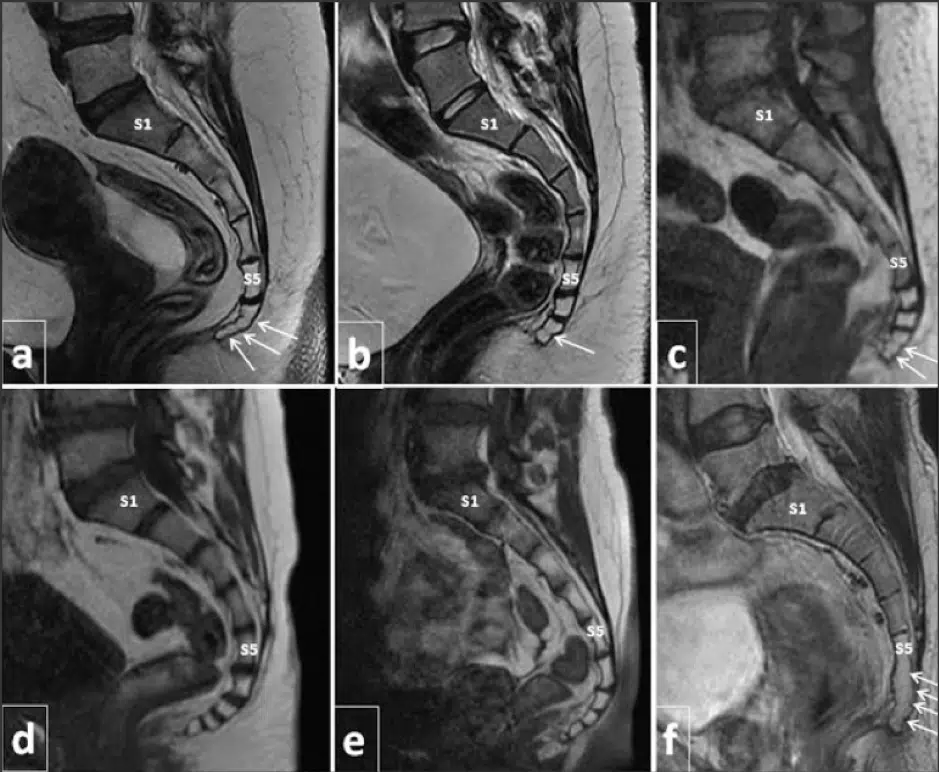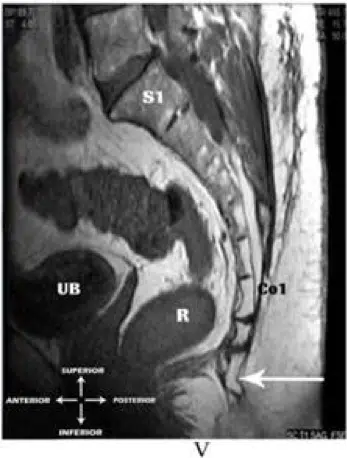If you have coccyx pain, you certainly know about it. It is a specific pain felt in the region of the tailbone and typically interrupts the task of sitting. It has also been referred to as ‘coccydynia’ or ‘coccygodynia.’ However these terms are not aligned to more recent terminology, with the preferred term being simply ‘coccyx pain.’
How Common is Coccyx Pain? What are the Risk Factors?
The exact incidence of coccyx pain is not well known. Unlike other musculoskeletal pain conditions, such as back or neck pain, the tailbone has received little interest in the way of research.
However, the known risk factors for coccyx pain include:
- Obesity
- Being female: females are 5 x more likely to suffer with coccyx pain
- Rapid weight loss due to the loss of cushioning around the coccyx (Lirette et al 2014)
- Increased ‘anterior angulation’ or ‘flexion’ of coccyx
- Reduced inter-coccygeal joints (Postacchini & Massobrio 1983)
- Excessive sitting in poor postures
- Vaginal delivery
Coccyx Anatomy
Coccyx is latin for ‘cuckoo’, as it thought to be of similar shape to the beak of a cuckoo bird (see image below). The coccyx is a triangular bone that forms the final part of the vertebral column and accounts for a mere 0.4% of the weight of the vertebral column (Lowrance & Latimer 1967).

The coccyx has high rates of variability with no two coccyx’s presenting the same. The coccyx can consist of 3, 4 or 5 bones or ‘vertebra’, which can be fused or separated by inter-coccygeal joints.
The average length of the coccyx is 3.5cm and it is slightly longer in males.

Function of the Coccyx
Although only small, the coccyx plays an important role in the pelvis. First and foremost the coccyx provides an attachment site for key muscles, ligaments and fascia. It also has a role in supporting bowel function and provides positional support to the anus. The coccyx also contributes to the task of sitting.
How can the Coccyx Become Painful?
The coccyx can become painful from either direct trauma, ie direct fall or kick, prolonged sitting on hard surfaces, chronic constipation or from a vaginal delivery. The coccyx can also become painful without direct trauma. Examples of non-traumatic causes of coccyx pain includes acute episode of back pain, periods of high stress, excessive gluteal or core work, which all can create muscular tension around the coccyx. Another example of non-traumatic causes of coccyx pain can be rapid weight loss, where people can lose the cushioning around the coccyx.
When does Coccyx Pain Hurt?
Patients often report coccyx pain to be worse with the following activities:
- Sitting, particularly when sitting with excessive posterior pelvic tilt or leaning back during sitting (increases weight-bearing on the coccyx)
- Standing after a period of time sitting
- Patients may also report feeling coccyx pain with emptying their bowels, sex or coughing/sneezing
What else can Cause Coccyx Pain?
The musculoskeletal presentation of coccyx pain explained in this article is by far the most common type of coccyx pain. This type of coccyx pain is well managed with pelvic Physiotherapy.
However there are some addition medical causes of coccyx pain that need to be considered such as:
- Pilonidal cyst: an abscess containing pus and usually containing hairs
- Tarlov cysts or ‘perineural cysts’: fluid-filled nerve root cysts found most commonly at the sacral level of the spine
- Masses
- Lower sacral radicular pain
- Coccygeal spicule (see image below)

What does a Physiotherapy Assessment of my Coccyx Involve?
A Physiotherapy assessment will include a subjective history, which means asking you about your coccyx pain and any other relevant questions pertaining to your general health. Your Physiotherapist will also perform an objective assessment, which will be tailored to your specific needs and may include the following:
- Pelvic girdle assessment
- External coccyx assessment
- Internal coccyx assessment (if patient is comfortable)
Your pelvic Physiotherapist may also refer you for imaging, either x-ray or MRI, if indicated.
What is the Treatment for Coccyx Pain?
As every coccyx pain presentation is different, your treatment plan will be tailored to your individual needs and goals. Typically Physiotherapy intervention will include:
- Education: so you understand what is causing your coccyx to hurt and what needs to be done to improve it
- Manual therapy: to address any muscular tension patterns contributing to your coccyx pain. This can be a combination of internal and external myofascial release work and/or dry needling.
- Sitting modification: we will teach you how to sit towards your SIT bones vs coccyx and prescribe appropriate sitting aids such as a coccyx wedge cushion.
- Specific exercise rehabilitation: this may include specific releases or stretches and strength based exercises to ensure the coccyx is protected for the longer term.
There is plenty you can do to effectively manage your coccyx pain. Understanding what is causing your particular pain is the start of taking positive steps towards your recovery. A skilled pelvic Physiotherapist who has experience with managing coccyx pain, is the best health care professional to guide you through this process.
Sydney Pelvic Clinic has a team of expert pelvic Physiotherapists who can help you manage your coccyx pain and return to the activities you enjoy. We also have a network of medical specialists we can refer to for appropriate investigation or medical management if indicated.
Other Useful Sites for Coccyx Pain
References
- Lirette L, Caiban G, Tolba R, Eissa H (2014) Coccydynia: an overview of the anatomy, aetiology, and treatment of coccyx pain. The Ochsner Journal14, 84 -87.
- Lowrance EW, Latimer HB. Weights and variability of components of the human vertebral column. Anat Rec 1967;159:83-8. 6.
- Postacchini F, Massobrio M. Idiopathic coccygodynia: Analysis of fifty-one operative cases and a radiographic study of the normal coccyx. J Bone Joint Surg Am 1983;65:1116-24.

